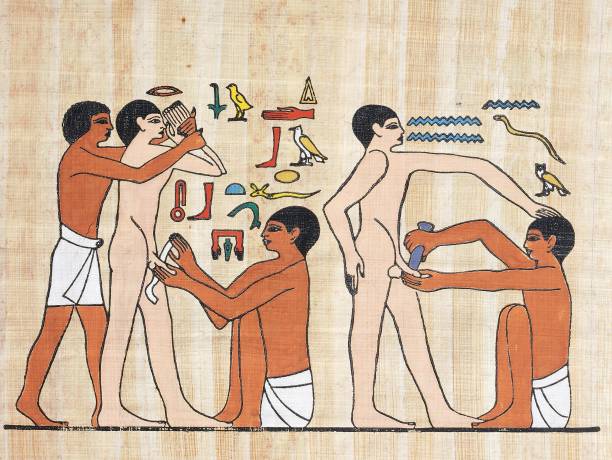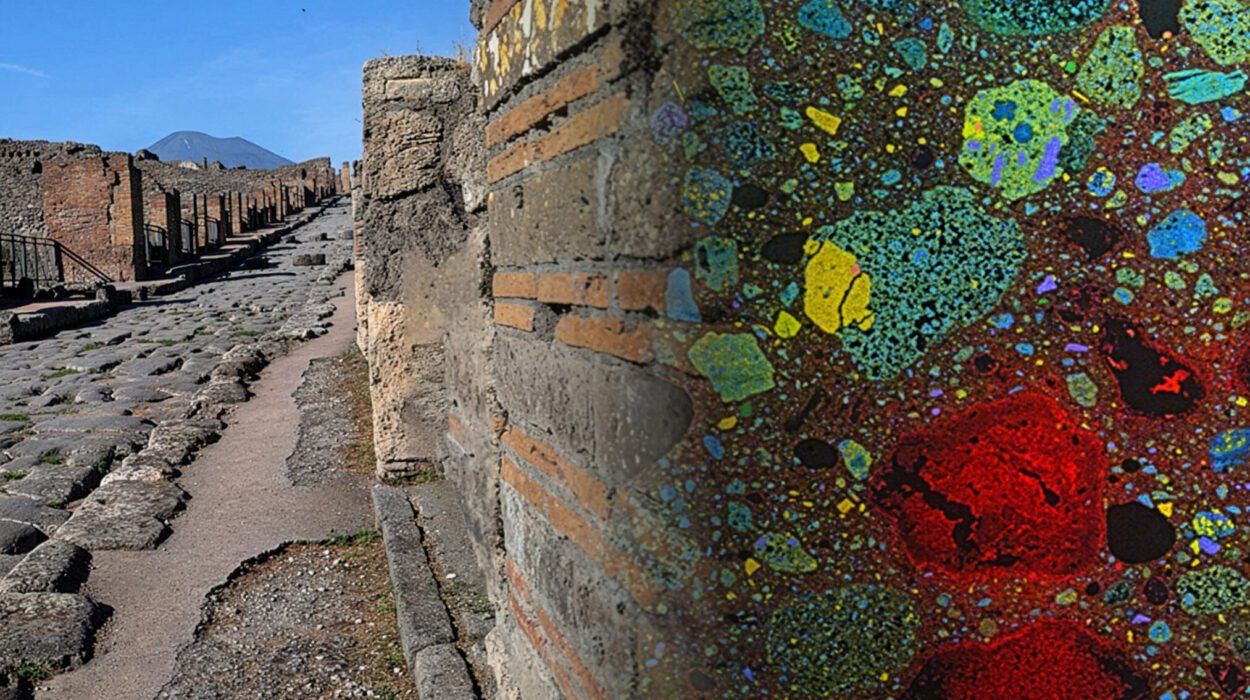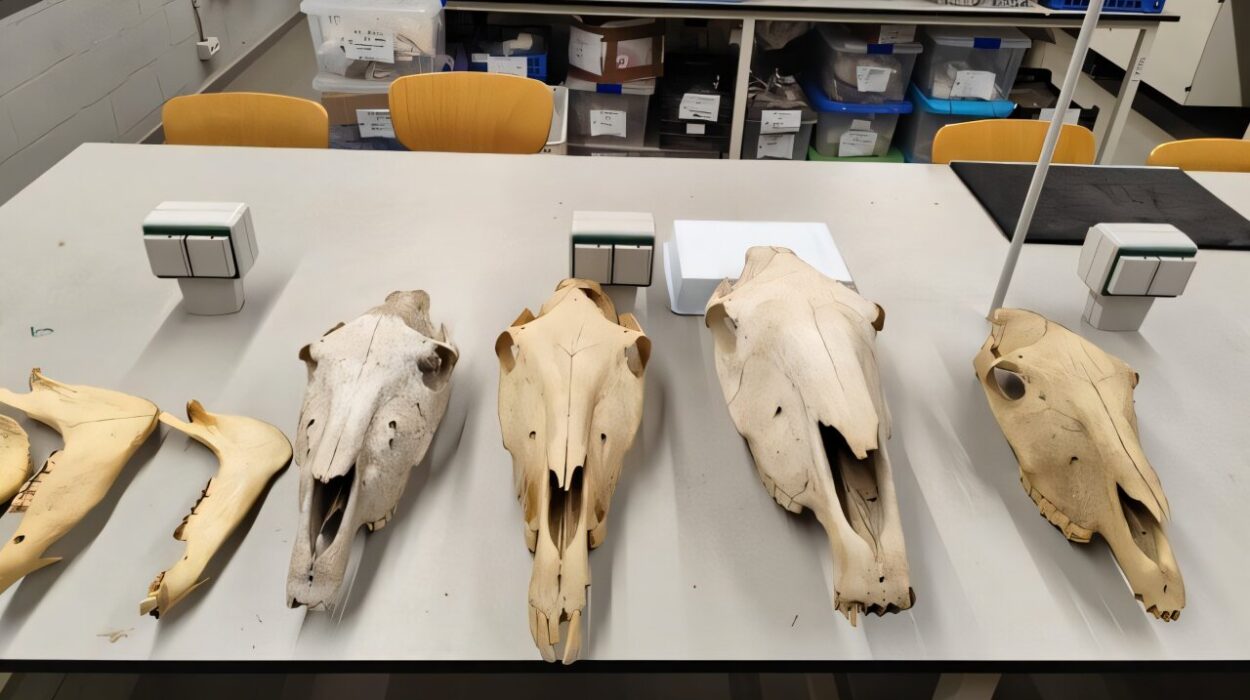For centuries, the tragic fate of Pompeii, the Roman city buried under volcanic ash in 79 CE, has fascinated historians, archaeologists, and the public alike. Frozen in time by the cataclysmic eruption of Mount Vesuvius, the city’s preserved ruins and body casts have offered an unparalleled glimpse into daily life in the Roman Empire. However, a groundbreaking study published on November 7, 2024, in Current Biology is rewriting history, revealing that much of what we thought we knew about Pompeii’s residents is based on modern biases rather than scientific reality.
Through the analysis of ancient DNA extracted from Pompeii’s famed body casts, researchers have uncovered surprising truths about the identities, relationships, and ancestry of the city’s ill-fated inhabitants. The study, led by geneticists and archaeologists from Harvard University and the Università di Firenze, demonstrates that long-held assumptions about the gender and familial structures of Pompeii’s victims were often incorrect.
Ancient DNA Reshapes Pompeii’s Narrative
For decades, interpretations of the body casts were largely based on the positioning of skeletons and contextual clues, such as jewelry or the apparent ages of the deceased. Traditionally, archaeologists assumed that individuals found embracing were relatives, and that jewelry or other adornments could indicate gender. However, this new study challenges these narratives.
“The scientific data we provide do not always align with common assumptions,” says David Reich of Harvard University. “For instance, one notable example is the discovery that an adult wearing a golden bracelet and holding a child, traditionally interpreted as a mother and child, were actually an unrelated adult male and child. Similarly, a pair of individuals thought to be sisters or mother and daughter were found to include at least one genetic male. These findings challenge traditional gender and familial assumptions.”
These revelations, derived from analyzing 14 of 86 plaster casts currently undergoing restoration, emphasize the importance of genetic evidence in archaeology. Rather than relying solely on visual or cultural interpretations, scientists can now reconstruct a more accurate picture of ancient lives.
Pompeii’s Population: A Diverse Ancestral Tapestry
Beyond challenging gender and relationship assumptions, the study also sheds light on the ancestry and genetic diversity of Pompeii’s residents. By examining genomic data, researchers discovered that the city was home to people with diverse backgrounds, primarily descending from recent immigrants from the eastern Mediterranean.
“Our findings have significant implications for the interpretation of archaeological data and the understanding of ancient societies,” says Alissa Mittnik, another researcher from Harvard. “They highlight the importance of integrating genetic data with archaeological and historical information to avoid misinterpretations based on modern assumptions.”
This discovery supports historical evidence that the Roman Empire was an interconnected and cosmopolitan civilization, with trade routes and migration shaping the genetic makeup of its cities. Pompeii, strategically located near Naples and a hub of commerce, likely attracted merchants, artisans, and workers from across the Mediterranean world.
Science Over Speculation: The Role of Multidisciplinary Research
The revelation that traditional interpretations of Pompeii’s victims were flawed underscores the need for a multidisciplinary approach in archaeology. By combining genetic analysis with strontium isotope dating, skeletal morphology, and historical records, researchers can achieve a more nuanced understanding of the past.
David Caramelli of the Università di Firenze notes, “This study illustrates how unreliable narratives based on limited evidence can be, often reflecting the worldview of the researchers at the time.”
This sentiment echoes broader discussions in archaeology and history about the importance of challenging established narratives. Assumptions about gender roles, family structures, and social organization often reflect contemporary biases rather than historical realities. The Pompeii study serves as a powerful reminder that science has the capacity to correct and refine our understanding of the past.
What Comes Next? Future Implications for Archaeology
This breakthrough study is just the beginning. As DNA sequencing technology advances, researchers anticipate uncovering even more about the people of Pompeii—and by extension, the broader Roman world. Future studies may delve deeper into questions about health, diet, mobility, and even interpersonal relationships within the ancient city.
Moreover, the methodology used in this research could be applied to other archaeological sites where bodies have been preserved under extraordinary circumstances. From ancient Egypt to the ice mummies of the Andes, genetic analysis has the potential to redefine how we interpret human history.
Conclusion: A New Chapter in Pompeii’s Story
The tragic story of Pompeii has captivated the world for centuries, but as this study demonstrates, our understanding of the past is always evolving. By challenging long-held assumptions and embracing scientific inquiry, we can uncover deeper truths about ancient civilizations.
The findings remind us that history is not a static narrative but a dynamic and ever-changing field of discovery. As we continue to explore and analyze Pompeii’s secrets, we move closer to an authentic representation of its people—one based not on speculation, but on science.
Reference: Ancient DNA challenges prevailing interpretations of the Pompeii plaster casts, Current Biology (2024). DOI: 10.1016/j.cub.2024.10.007. www.cell.com/current-biology/f … 0960-9822(24)01361-7






